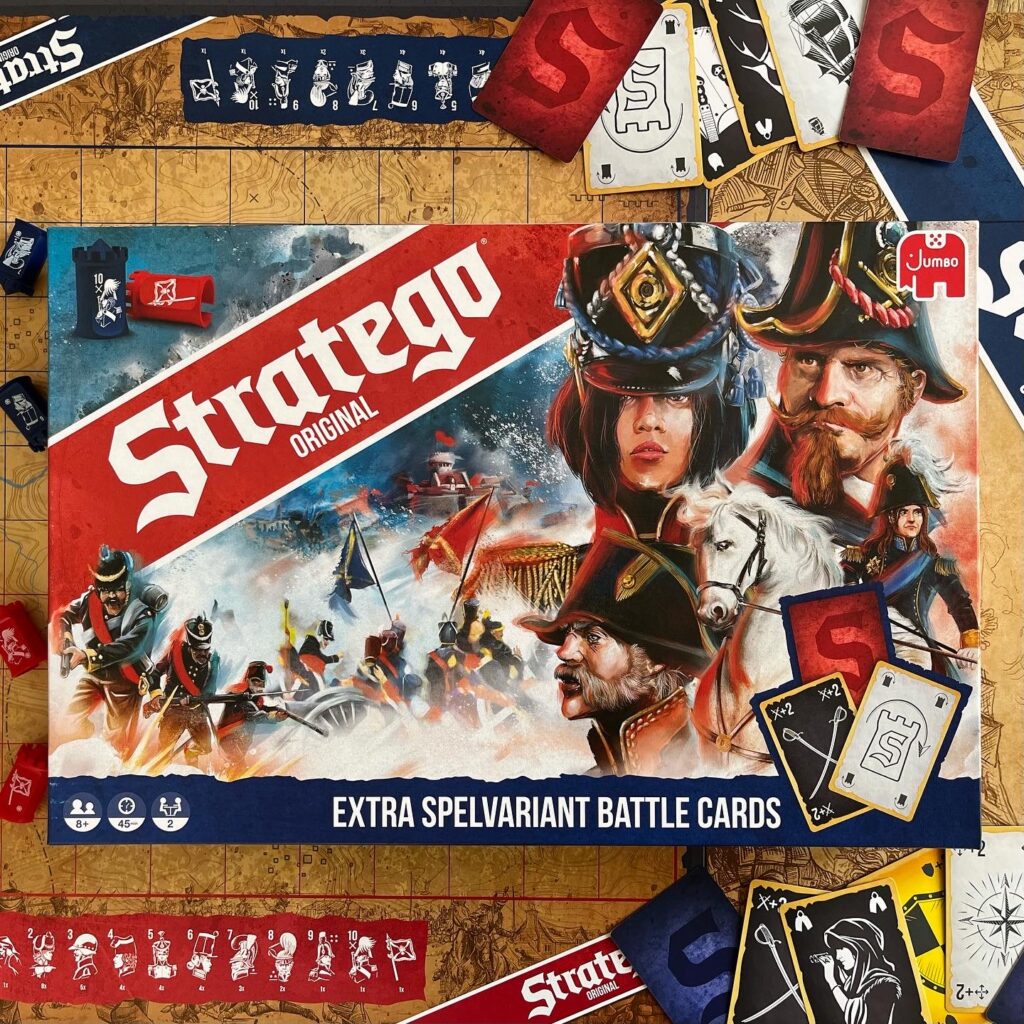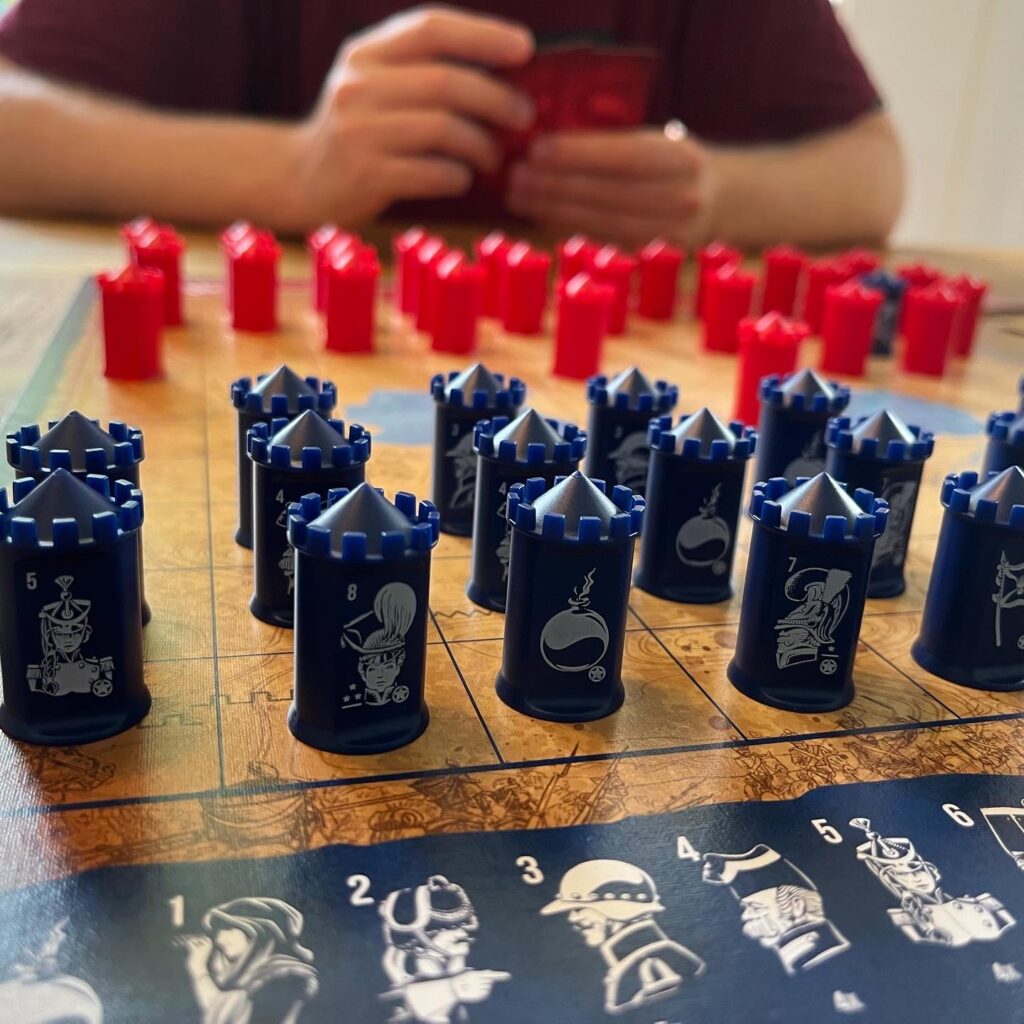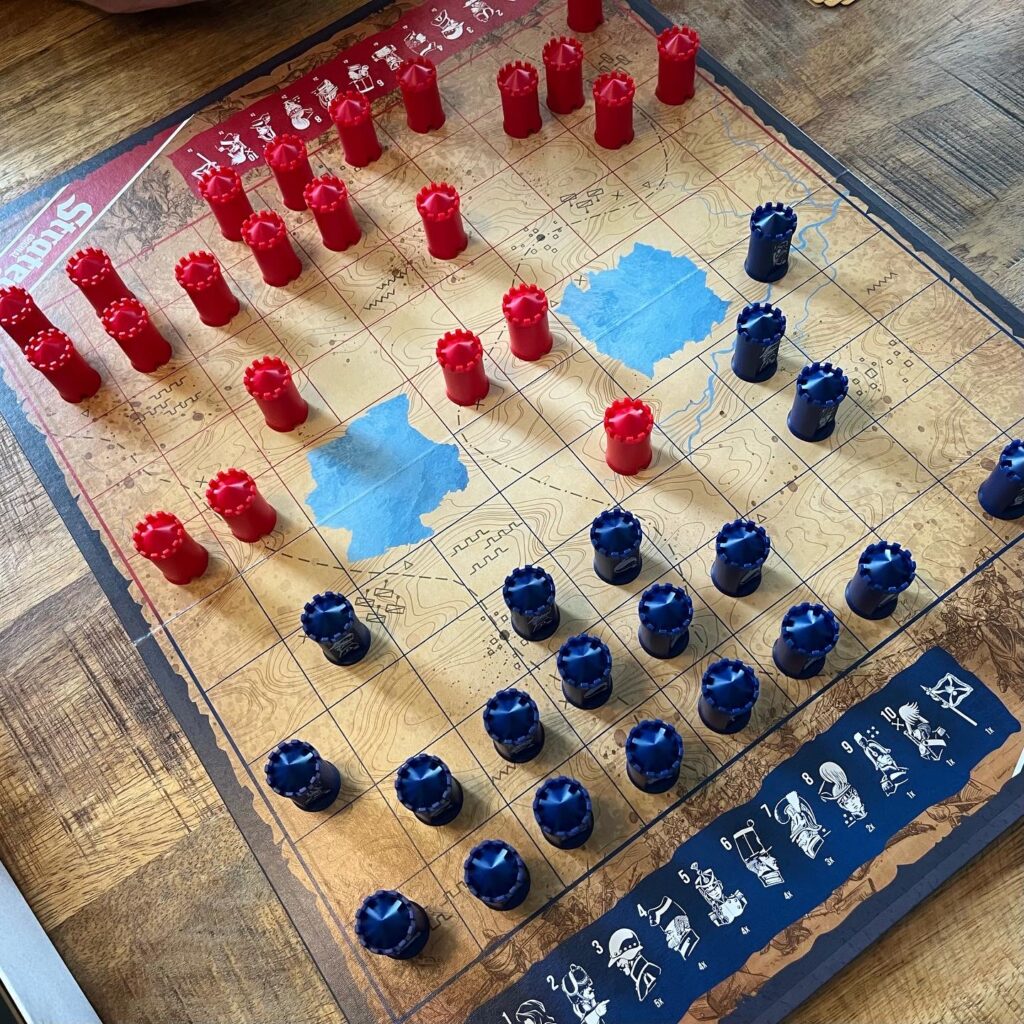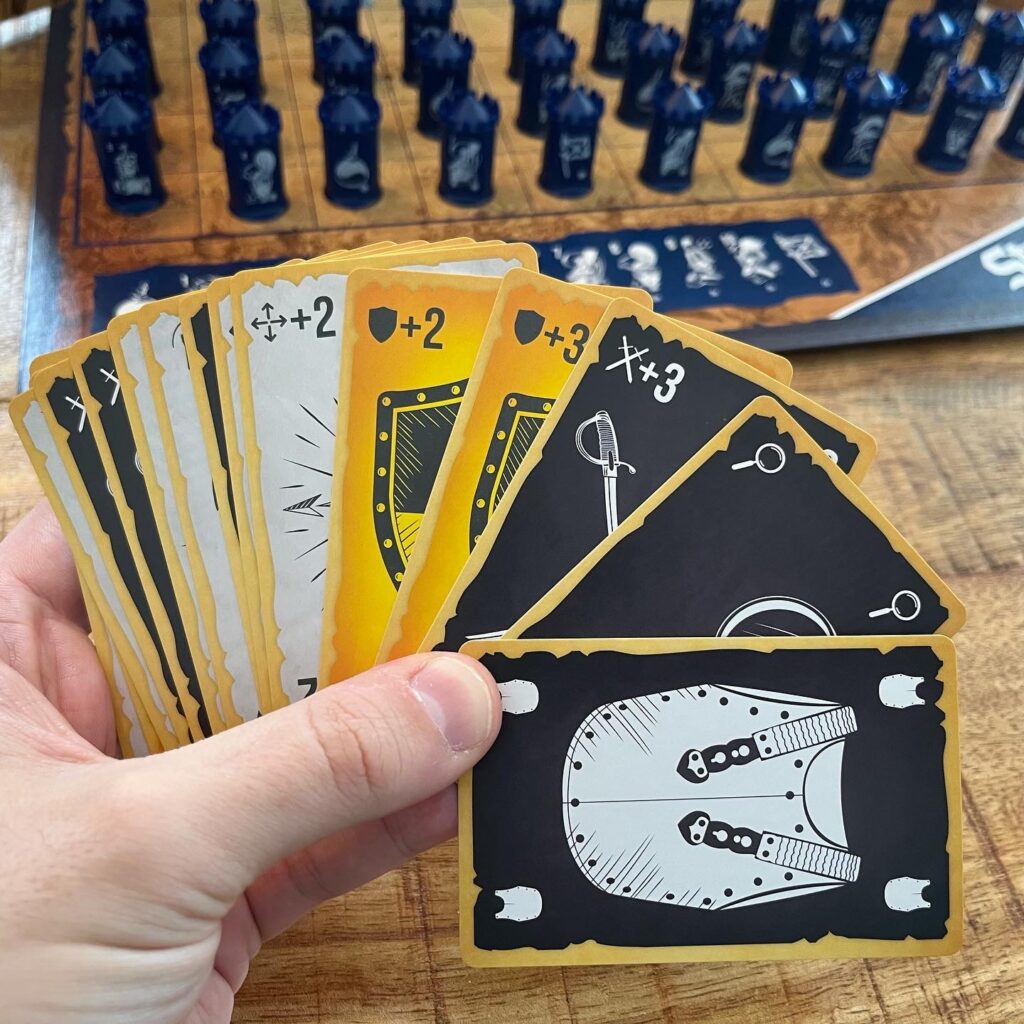Bunkers, battles, bombs, bluff and blatant lies and deception. “Ah, what a woeful day! You have encountered my bomb!” Do you know how strategically deploy your army and be the first to find your opponent’s flag? This classic two-player board game always ends with exactly 1 winner and 1 loser. Maybe the new Battle Cards will lead you to victory?
Background
I previously wrote about the game Stratego and the different variants of this classic game in an article in our Dutch language series “Voor ieder wat speels!” which would translate into: “Something playful for everyone!”. As I described in this blog, Stratego is one of my oldest and fondest memories of board games. In fact, it was the only game that my mother – who is far from a games fan – loved to play with me. Perhaps I should ask why exactly she liked Stratego and maybe I should also introduce her to a modern variant such as Quick Battle, Spies & Lies or the one I will cover in this review.

I played many games of Stratego with my mother, my father and also with my oldest sister: who, by the way, is also an avid board gamer. My family and I are not the only players who have spent hours staring at anonymous playing pieces. Many other players have also played many games of Stratego together. Stratego was and is immensely popular and Stratego has been published by the Dutch game publisher Jumbo Games since 1958, but even before that Stratego had a history.
Stratego is a Dutch game created by Jacques Johan Mogendorff, a Jewish-Dutch merchant. Mogendorff most likely invented the game during World War II when he had to go into hiding to escape the fascist regime. As with other games from this era, the rights and origins are always a bit gray. Probably the game idea found its origin in earlier games and game mechanics already available in other countries, especially in the Far East. The variant we are playing now was invented by Mogendorff and has been published by Jumbo and its predecessors almost since the beginning.
Setup
At the beginning of the game, the game board is placed on the table and the players take their places on either side of the table and the game board. One player takes all blue playing figures and the other player takes all red figures.
Secretly, their players now start distributing their pawns to the first four rows on their side of the game board and this is perhaps the most important phase of the game. Indeed, players now largely determine their Stratego as they establish the starting positions of their various playing pieces including the flag. This edition includes a view screen that players can place in the center of the board during game setup to easily secretly make their lineups.


Whoever manages to capture the other player’s flag wins Stratego. The starting lineup is crucial. Maybe you place all bombs around your flag (predictable) or all high ranking playing pieces (equally predictable), but maybe you play risky and unexpected and place your flag at the very front row (you’re crazy). There are plenty of possibilities and you should do your best to capitalize on your opponent’s possible strategy. A healthy dose of bluff and empathy is not amiss at this stage.
This updated edition includes a game element that was introduced in the anniversary edition of Stratego already released earlier this year: so-called Battle Cards. This new element and associated game design I will discuss in more detail later in this review.
Gameplay
In this classic game, players take turns to move one of their playing pieces. move it. Players are logically not allowed to move their bombs and flag. It is possible that the lack of movement of one of these playing pieces may be noticed by the other player, but possibly that player may be trying to lead the other astray….
If a playing piece lands on a square with an enemy playing piece of, these playing pieces start fighting. Both players reveal their playing pieces and then the values of the playing pieces must be compared. The highest value (military rank) wins, but again there are some exceptions.
The spy (rank 0) always wins over the marshal (rank 10), only a miner can defuse and defeat the bomb (all other playing pieces lose to a bomb) and if the flag is captured the attacking player “wins” the game.
Battle Cards
A new element are the so-called Battle Cards. When players play the Battle Cards variant, they choose a faster game variant with a set of cards. Players have fewer pawns on the game board, as they will only play with the pawns displayed with a star. They place only pawns on the first three rows of the game board and receive a set of action cards: the Battle Cards.


With the Battle Cards, players have more options. They can use the white cards to perform additional types of maneuvers (including moving diagonally, moving across water and a type of castling where they can swap two playing pieces), with the black cards they can gain additional attack power, protect themselves from bombs or other special actions and with yellow cards players can defend against an attack.
Conclusion
Stratego remains a delightful and classic duel full of bluff, strategy and tactics. It is one of the few “classics” that I still enjoy playing. Players can fool each other considerably through bluff and deception with some unexpected moves, tactical moves and a surprising starting position.
This new edition is beautifully designed, but retains its classic character. The plastic playing pieces have the now familiar Stratego shape (a round tower with a pointed roof) and the illustrations also feel familiar, classic, but at the same time very colorful and fresh. The game box comes with a handy insert, which keeps the pieces in the box nicely.The vision screen for secretly setting up the starting lineup remains a valued addition.
The Battle Cards transform the classic Stratego into a more modern strategic game with a lot more dynamism. The game plays smoother and the cards give players additional options and an extra layer of bluff and secret. The special maneuvers allow not only the scout to move faster across the game board, but other pieces and playing pieces that normally don’t stand a chance can also eliminate higher ranks by deploying Battle Cards. The Battle Cards are scarce, so use them tactically.



